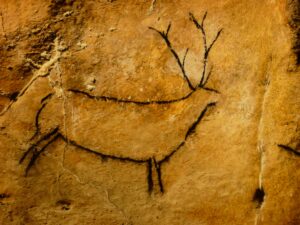
I have been watching the BBC Two series on ‘Civilisations’ with interest. Visually it is stunning, but mentally, it leaves me a bit frustrated. Right from the start there were certain issues, that I, personally, would have approached differently.
For example, as far as I can tell, the series has held to Kenneth Clarke’s famous lack of any definition of civilisation. This is all very well, but in doing so it becomes hard to avoid falling into the trap of including everything. The programme website talks about an exploration of ‘humanity’s desire to create’. Is humanity, by the very nature of being creative, intrinsically civilised? The series-makers obviously think so. You might argue ‘no’. Are there groups, even today, that we would not consider civilised? And yet, by the arguments of cultural relativity, perhaps we should allow that they might, indeed, regard themselves as civilised and see us as the ‘barbarians’.
As the series progresses, another matter which has got me thinking is the association it makes between art and civilisation. It begs a lot of questions, quite apart from the fact that there is a lot more to creativity than art, what about food, Lego, or space technology for example? Does a society have to be civilised to make art? Does making art qualify one as civilised? Are there societies that don’t make art? Are there uncivilised artists?
I am loving the romp through major artworks around the world. It is a visual feast, but I find it a bit static intellectually. I am still wondering what the art tells us about civilisation. I am learning something about art, but I am not sure that I am any further forward in my understanding of civilisation.
There are so many ways by which one could explore civilisation. Many people consider it through analysis of social developments: the institutions and groups that make up a community; the ways in which those groups relate to one another. Others consider the degree of altruism and compassion within a society: how does it look after those who are not able to care for themselves. Some measure the size and complexity of a society. Some the outputs. I guess art falls into the latter category, but there could be so much else: what about music, buildings, funeral rights, books, political tracts. Perhaps the Oxford English dictionary has it right when it says that civilisation is merely the stage of social development that is the most advanced. Though, on second thoughts, those familiar with the works of George Orwell amongst others will be able to think of arguments against that.
I’m not sure I really believe in civilisation. For me it is a judgemental term that has more often than not been used to imply a degree of superiority over others. I’d lay a bet that Homo Sapiens considered themselves civilised when compared to Neanderthals. And I’d not be surprised if Neanderthals did not consider themselves civilised in comparison to the upstart Homo Sapiens. We know, after all, that they too created art – so by the definitions of the BBC they were certainly civilised.
In a way, that returns me to the series: we are told that it looks at the way that different civilisations around the world have influenced one another. So perhaps it is about outsiders, about otherness, and the way we deal with it. Yet, it becomes hard to talk about anything in depth if we do not define it first. I am enjoying the series, but to me it says most about a western understanding of the relationship between art and society (actually all too often the relationship between the hierarchical elite and the people) around the world. That does not detract from its value, clearly it has got me thinking and I look forward to the rest of the programmes.
Watching the latest episode I realise that I am hoping that the next series could be on ‘Uncivilised’ – now there is a challenge – dare I hope!
You must be logged in to post a comment.